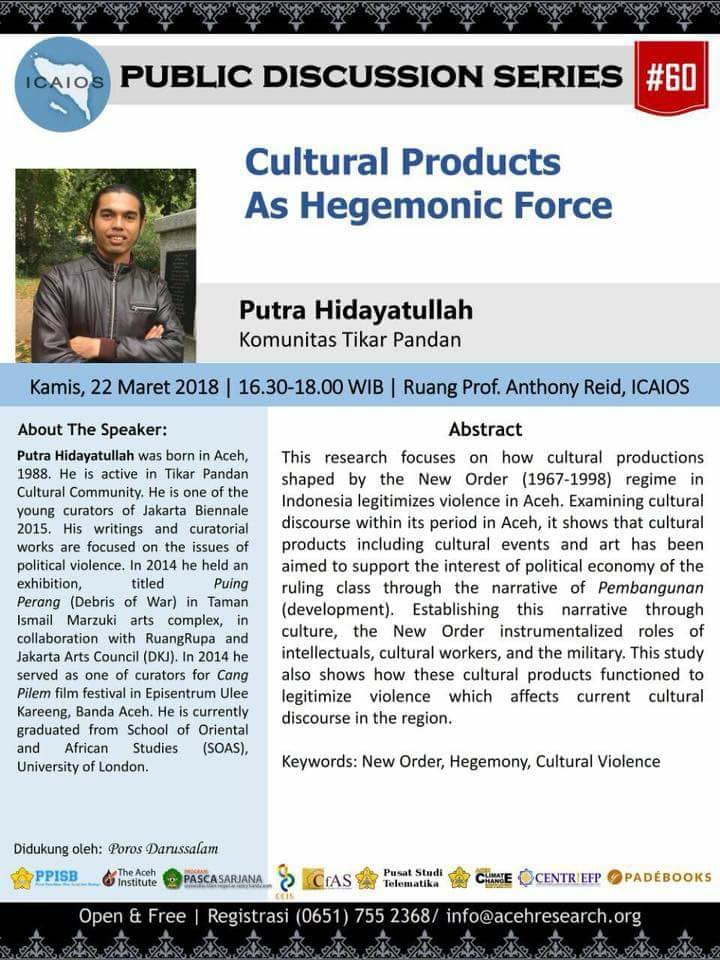PDS #60: Cultural Products As Hegemonic Force

Public Discussion Series
Putra Hidayatullah
Komunitas Tikar Pandan
| Prof. Anthony Reid Seminar Room, ICAIOS |

Putra Hidayatullah
Komunitas Tikar Pandan
Selamat kepada para Finalis
Authors:
Jamie McCaughey, Ibnu Mundzir,
Saiful Mahdi, and Patrick Daly
In 2004, a devastating tsunami struck coastlines around the Indian Ocean. Examining the long-term recovery of the city of Banda Aceh, Indonesia, we found that reconstruction aid provided mostly near the coast, combined with many people's preferences to move to safer areas instead, has had the unintended consequence that the poor have become disproportionately exposed to coastal hazards.
We published these findings in Nature Sustainability (see also a commentary and blog post). For this and other studies, researchers from the Earth Observatory of Singapore, Nanyang Technological University teamed up with our colleagues at the International Centre for Aceh and Indian Ocean Studies and Syiah Kuala University in Banda Aceh, Indonesia.
 |
| Banda Aceh and surroundings after reconstruction. The tsunami reached ~3 km inland across the low-lying terrain. Following this, the international reconstruction effort rebuilt mostly in-place in areas near the coast |
As we detail in our paper and blog post, this study looks at the question of where to rebuild after a disaster. This decision often involves a difficult tradeoff: rebuilding in-place puts people back in disaster-prone areas, yet mass relocation projects often have negative impacts on people's livelihoods, land rights, and connections to their community. The international humanitarian sector often favors rebuilding in-place, but is this always what people want after a devastating disaster?